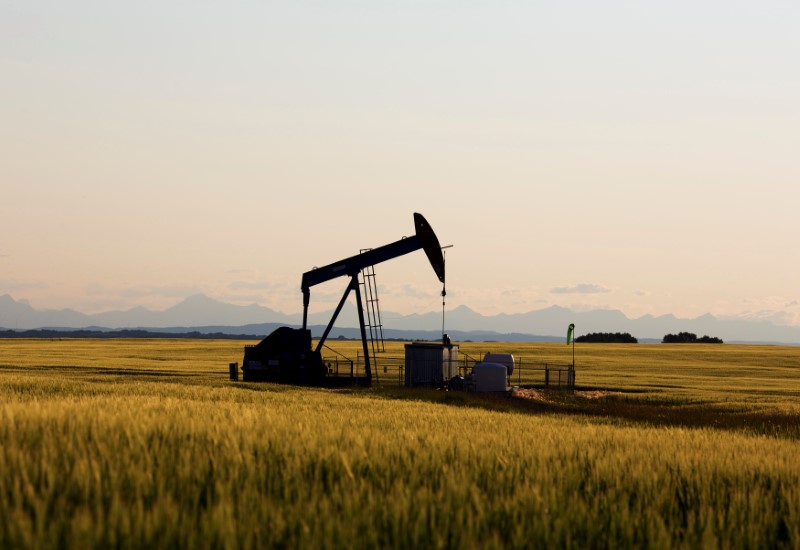 © Reuters. FILE PHOTO: An oil pump jack pumps oil in a field near Calgary
© Reuters. FILE PHOTO: An oil pump jack pumps oil in a field near CalgaryBy David Ljunggren and Rod Nickel
OTTAWA/WINNIPEG, Manitoba (Reuters) – The Canadian government is considering a request from Alberta to share the cost of buying rail cars to move an additional 120,000 barrels per day of from the nation’s oil-rich province, two sources with direct knowledge of the matter told Reuters.
Under the terms of the proposal submitted by the Alberta government last week, the additional rail cars would be in service by October 2019 and would run until some time in 2022, the sources added.
The Alberta government estimates the one-time capital cost of adding extra rail capacity at about C$350 million ($264.6 million), with the total operating costs spread over three years estimated at about C$2.6 billion, the sources said.
The 120,000 barrels per day of crude oil would cover most of the current estimated oversupply.
A spokeswoman for Alberta Premier Rachel Notley would not confirm the details of the proposal, but said the premier has previously said she wanted to add 120,000 barrels per day of capacity.
With a lack of pipeline capacity, Western Canadian oil producers have struggled to move oil to refineries in the United States, resulting in Canadian crude’s fetching record low prices. That has prompted the Alberta government to take urgent measures to shore up the industry, which drives its economy and accounts for the bulk of government revenues.
Alberta’s finance minister, Joe Ceci, told reporters on Wednesday the province had asked Ottawa for support on capacity expansions and said he was disappointed that crude-by-rail spending was not included as an expenditure line in a fiscal update released by Canadian Finance Minister Bill Morneau earlier in the day.
A spokesman for Morneau was not immediately available for comment.
($1 = 1.3229 Canadian dollars)
Fusion Media or anyone involved with Fusion Media will not accept any liability for loss or damage as a result of reliance on the information including data, quotes, charts and buy/sell signals contained within this website. Please be fully informed regarding the risks and costs associated with trading the financial markets, it is one of the riskiest investment forms possible.
Source: Investing.com




























